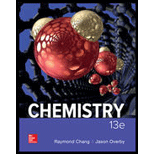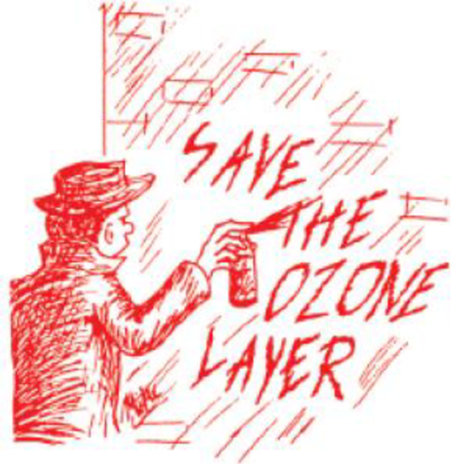
Chemistry
13th Edition
ISBN: 9781259911156
Author: Raymond Chang Dr., Jason Overby Professor
Publisher: McGraw-Hill Education
expand_more
expand_more
format_list_bulleted
Concept explainers
Textbook Question
Chapter 20, Problem 20.79QP
What is funny about the following cartoon?

Expert Solution & Answer
Want to see the full answer?
Check out a sample textbook solution
Students have asked these similar questions
If I have 30% H2O2, indicate how to prepare a 6% H2O2 solution.
7)
8)
FCI II
-C-C-C=C-C
||
Br Br
||
-C=C-Br
-CEC-C-C-
10)
11)
F Br
i
OH
مله
12)
Br
i
13)
14)
15)
CH3CHFCHFC=CH
C(OH)Br2CHF(CH2)4CH2CH3
CH3(CH2)3CH=CH(CH2)2CH3
Name
1) 3-fluoro, 1-butene
2) 2-heptene
2,3-difluoro-
1-pentene
4) 6-iodo,4-methyl-
2-decyne
5) 4,4-dibromo-
1,2-butandiol
Complete structural formula
F
-C=C-C-C-
Line formula
Condensed structural formula
N
F
CH2=CHCHFCH3
Chapter 20 Solutions
Chemistry
Ch. 20.2 - Calculate the wavelength (in nm) of a photon...Ch. 20.5 - Prob. 2PECh. 20.5 - Prob. 1RCFCh. 20.8 - Prob. 3PECh. 20 - Prob. 20.1QPCh. 20 - Prob. 20.2QPCh. 20 - Prob. 20.3QPCh. 20 - Prob. 20.4QPCh. 20 - Prob. 20.5QPCh. 20 - Prob. 20.6QP
Ch. 20 - Prob. 20.7QPCh. 20 - Prob. 20.8QPCh. 20 - Prob. 20.9QPCh. 20 - Prob. 20.10QPCh. 20 - Prob. 20.11QPCh. 20 - The green color observed in aurora borealis is...Ch. 20 - Prob. 20.13QPCh. 20 - Prob. 20.14QPCh. 20 - Prob. 20.15QPCh. 20 - Prob. 20.16QPCh. 20 - Prob. 20.17QPCh. 20 - Prob. 20.18QPCh. 20 - Prob. 20.19QPCh. 20 - Prob. 20.20QPCh. 20 - Prob. 20.21QPCh. 20 - Prob. 20.22QPCh. 20 - Prob. 20.23QPCh. 20 - Prob. 20.24QPCh. 20 - Prob. 20.25QPCh. 20 - Prob. 20.26QPCh. 20 - Prob. 20.27QPCh. 20 - Prob. 20.28QPCh. 20 - Prob. 20.29QPCh. 20 - Prob. 20.30QPCh. 20 - Prob. 20.31QPCh. 20 - Prob. 20.32QPCh. 20 - Prob. 20.33QPCh. 20 - Prob. 20.34QPCh. 20 - Prob. 20.35QPCh. 20 - Prob. 20.36QPCh. 20 - Prob. 20.37QPCh. 20 - Prob. 20.38QPCh. 20 - Prob. 20.39QPCh. 20 - Calcium oxide or quicklime (CaO) is used in...Ch. 20 - The molar heat capacity of a diatomic molecule is...Ch. 20 - Prob. 20.42QPCh. 20 - Prob. 20.43QPCh. 20 - List three detrimental effects of acid rain.Ch. 20 - Briefly discuss two industrial processes that lead...Ch. 20 - Discuss ways to curb acid rain.Ch. 20 - Prob. 20.47QPCh. 20 - Describe the removal of SO2 by CaO (to form CaSO3)...Ch. 20 - Prob. 20.49QPCh. 20 - Prob. 20.50QPCh. 20 - Prob. 20.51QPCh. 20 - Prob. 20.52QPCh. 20 - Identify the gas that is responsible for the brown...Ch. 20 - The safety limits of ozone and carbon monoxide are...Ch. 20 - Prob. 20.55QPCh. 20 - In which region of the atmosphere is ozone...Ch. 20 - Assume that the formation of nitrogen dioxide:...Ch. 20 - The gas-phase decomposition of peroxyacetyl...Ch. 20 - On a smoggy day in a certain city the ozone...Ch. 20 - Which of the following settings is the most...Ch. 20 - Prob. 20.61QPCh. 20 - Prob. 20.62QPCh. 20 - Prob. 20.63QPCh. 20 - Prob. 20.64QPCh. 20 - A concentration of 8.00 102 ppm by volume of CO...Ch. 20 - Prob. 20.66QPCh. 20 - Briefly describe the harmful effects of the...Ch. 20 - The equilibrium constant (KP) for the reaction is...Ch. 20 - As stated in the chapter, carbon monoxide has a...Ch. 20 - Instead of monitoring carbon dioxide, suggest...Ch. 20 - In 1991 it was discovered that nitrous oxide (N2O)...Ch. 20 - A glass of water initially at pH 7.0 is exposed to...Ch. 20 - A 14-m by 10-m by 3.0-m basement had a high radon...Ch. 20 - Ozone in the troposphere is formed by the...Ch. 20 - Prob. 20.75QPCh. 20 - Prob. 20.76QPCh. 20 - A person was found dead of carbon monoxide...Ch. 20 - The carbon dioxide level in the atmosphere today...Ch. 20 - What is funny about the following cartoon?Ch. 20 - Calculate the standard enthalpy of formation (Hf )...Ch. 20 - Prob. 20.81QPCh. 20 - Prob. 20.82QPCh. 20 - Prob. 20.83QPCh. 20 - Peroxyacetyl nitrate (PAN) undergoes thermal...Ch. 20 - How are past temperatures determined from ice...Ch. 20 - The balance between SO2 and SO3 is important in...Ch. 20 - Prob. 20.87QPCh. 20 - The HO3 radical was once thought of as a temporary...Ch. 20 - What is the difference between weather and...Ch. 20 - Estimate the annual production of carbon dioxide...
Knowledge Booster
Learn more about
Need a deep-dive on the concept behind this application? Look no further. Learn more about this topic, chemistry and related others by exploring similar questions and additional content below.Similar questions
- 1. Part 1: Naming Organic Compounds он H₁C-C-CH3 CH3 Br CI CI 2. Br-CH-CH-CH₂ H₂C-CH-C= -CH-CH2-CH3 3. HC-CH-CH-C-OH 5. H₂C-CH-CH₂-OH 7. OH 4. CH CH₂-CH₂ 6. сно CH-CH-CH-CH₂-CH₂ H₁₂C-CH-CH-CH-CH₁₂-CH₁₂ 8. OHarrow_forward11 Organic Chemistry Organic Nomenclature Practice Name/Functional Group n-butane Formula Structural Formula (1) C4tt10 H3C C- (2) CH3CH2CH2 CH 3 H₂ -CH3 Н2 name & functional group (1) and (2) OH H₁₂C Н2 name only (1) and (2) name only (1) and (2) H₁C - = - CH₂ Н2 HC=C-C CH3arrow_forwardUnder aqueous basic conditions, nitriles will react to form a neutral organic intermediate 1 that has an N atom in it first, and then they will continue to react to form the final product 2: NC H₂O он- H₂O 1 2 OH Draw the missing intermediate 1 and the final product 2 in the box below. You can draw the two structures in any arrangement you like. Click and drag to start drawing a structure.arrow_forward
- Assign these COSY Spectrumarrow_forwardAssign these C-NMR and H-NMR Spectrumarrow_forwardPredict the product of this organic reaction: IZ + HO i P+H₂O Specifically, in the drawing area below draw the skeletal ("line") structure of P. If there is no reasonable possibility for P, check the No answer box under the drawing area. No Answer Click and drag to start drawing a structure. ☐ :arrow_forward
- Predict the products of this organic reaction: 0 O ----- A + KOH ? CH3-CH2-C-O-CH2-C-CH3 Specifically, in the drawing area below draw the condensed structure of the product, or products, of this reaction. (If there's more than one product, draw them in any arrangement you like, so long as they aren't touching.) If there aren't any products because this reaction won't happen, check the No reaction box under the drawing area. No reaction Click anywhere to draw the first atom of your structure. X ⑤ èarrow_forwardPredict the products of this organic reaction: O CH3 + H2O + HCI A A? CH3-CH2-C-N-CH3 Specifically, in the drawing area below draw the condensed structure of the product, or products, of this reaction. If there's more than one product, draw them in any arrangement you like, so long as they aren't touching. If there aren't any products because this reaction won't happen, check the No reaction box under the drawing area. No Reaction Click anywhere to draw the first atom of your structure.arrow_forwardWhat is the missing reactant in this organic reaction? R+ HO-C-CH2-CH3 0= CH3 CH3 —CH, C−NH—CH CH3 + H₂O Specifically, in the drawing area below draw the condensed structure of R. If there is more than one reasonable answer, you can draw any one of them. If there is no reasonable answer, check the No answer box under the drawing area. Note for advanced students: you may assume no products other than those shown above are formed. No Answer Click anywhere to draw the first atom of your structure. €arrow_forward
- 个 CHEM&131 9267 - $25 - Intro to Mail - Hutchison, Allison (Student x Aktiv Learnin https://app.aktiv.com Draw the product of the reaction shown below. Ignore inorganic byproducts. + Na2Cr2O7 Acetone, H2SO4 Type here to search Dryng OH W Prarrow_forwardPredict the products of this organic reaction: OH + NaOH A? Specifically, in the drawing area below draw the skeletal ("line") structure of the product, or products, of this reaction. (If there's more than one product, draw them in any arrangement you like, so long as they aren't touching.) If there aren't any products because this reaction won't happen, check the No reaction box under the drawing area. No reaction Click and drag to start drawing a structure. ✓ Sarrow_forwardPredict the products of this organic reaction: CH3-C-O-CH2-CH2-C-CH3 + H₂O ? A Specifically, in the drawing area below draw the condensed structure of the product, or products, of this reaction. (If there's more than one product, draw them in any arrangement you like, so long as they aren't touching.) If there aren't any products because this reaction won't happen, check the No reaction box under the drawing area. No reaction Click anywhere to draw the first atom of your structure. :☐ darrow_forward
arrow_back_ios
SEE MORE QUESTIONS
arrow_forward_ios
Recommended textbooks for you
- Chemistry: Matter and ChangeChemistryISBN:9780078746376Author:Dinah Zike, Laurel Dingrando, Nicholas Hainen, Cheryl WistromPublisher:Glencoe/McGraw-Hill School Pub Co
 Chemistry for Today: General, Organic, and Bioche...ChemistryISBN:9781305960060Author:Spencer L. Seager, Michael R. Slabaugh, Maren S. HansenPublisher:Cengage Learning
Chemistry for Today: General, Organic, and Bioche...ChemistryISBN:9781305960060Author:Spencer L. Seager, Michael R. Slabaugh, Maren S. HansenPublisher:Cengage Learning  Chemistry: The Molecular ScienceChemistryISBN:9781285199047Author:John W. Moore, Conrad L. StanitskiPublisher:Cengage Learning
Chemistry: The Molecular ScienceChemistryISBN:9781285199047Author:John W. Moore, Conrad L. StanitskiPublisher:Cengage Learning Macroscale and Microscale Organic ExperimentsChemistryISBN:9781305577190Author:Kenneth L. Williamson, Katherine M. MastersPublisher:Brooks Cole
Macroscale and Microscale Organic ExperimentsChemistryISBN:9781305577190Author:Kenneth L. Williamson, Katherine M. MastersPublisher:Brooks Cole EBK A SMALL SCALE APPROACH TO ORGANIC LChemistryISBN:9781305446021Author:LampmanPublisher:CENGAGE LEARNING - CONSIGNMENT
EBK A SMALL SCALE APPROACH TO ORGANIC LChemistryISBN:9781305446021Author:LampmanPublisher:CENGAGE LEARNING - CONSIGNMENT


Chemistry: Matter and Change
Chemistry
ISBN:9780078746376
Author:Dinah Zike, Laurel Dingrando, Nicholas Hainen, Cheryl Wistrom
Publisher:Glencoe/McGraw-Hill School Pub Co

Chemistry for Today: General, Organic, and Bioche...
Chemistry
ISBN:9781305960060
Author:Spencer L. Seager, Michael R. Slabaugh, Maren S. Hansen
Publisher:Cengage Learning

Chemistry: The Molecular Science
Chemistry
ISBN:9781285199047
Author:John W. Moore, Conrad L. Stanitski
Publisher:Cengage Learning

Macroscale and Microscale Organic Experiments
Chemistry
ISBN:9781305577190
Author:Kenneth L. Williamson, Katherine M. Masters
Publisher:Brooks Cole

EBK A SMALL SCALE APPROACH TO ORGANIC L
Chemistry
ISBN:9781305446021
Author:Lampman
Publisher:CENGAGE LEARNING - CONSIGNMENT
Solutions: Crash Course Chemistry #27; Author: Crash Course;https://www.youtube.com/watch?v=9h2f1Bjr0p4;License: Standard YouTube License, CC-BY